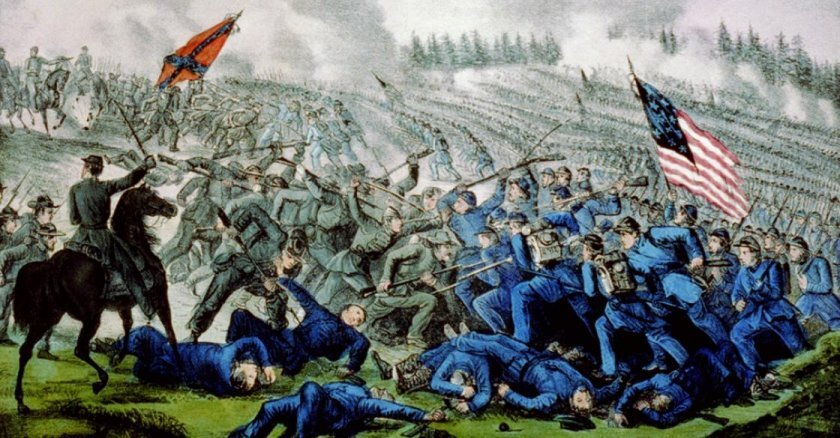History of Political Division: Tracing the Trends of Ideological Narcissism in the U.S.
Political division is not a new phenomenon in the United States. Throughout history, ideological differences have shaped the nation’s course and character. However, the intensity of this division, exacerbated by ideological narcissism, has fluctuated over time. Let’s trace this trend through significant periods in American history.
Colonial Era and the Birth of a Nation
Even during the nation’s birth, ideological divisions were apparent. Patriots who advocated for independence from British rule clashed with Loyalists who wished to remain under the crown. The intense ideological disputes of this era crystallized into a foundational element of American democracy: the balance between federal and state power.
The Civil War Period
Fast forward to the mid-19th century, and the nation found itself split in two over the contentious issue of slavery. This profound ideological divide culminated in the American Civil War, one of the most extreme examples of ideological narcissism in U.S. history.
The Progressive Era
The late 19th and early 20th century, known as the Progressive Era, saw another significant period of political division. Economic inequality, immigration, and industrialization were major points of contention, leading to various social and political reforms.
Post-World War II and the Cold War
Post-World War II America and the subsequent Cold War era were characterized by a somewhat unified political front against communism. Despite internal divisions, such as those highlighted by the Civil Rights Movement, the shared external threat helped to mitigate ideological narcissism during this period.
The Modern Era
In the late 20th and early 21st century, political divisions have again intensified. The contentious 2000 Presidential election, the responses to the 9/11 attacks, debates over healthcare reform, the allegations of Russian interference in the 2016 elections, and differing responses to the COVID-19 pandemic are just a few examples of events that have underscored the ideological divide in recent years.
Social media and other digital platforms have amplified this division by enabling the formation of echo chambers that reinforce existing beliefs and suppress opposing views, thereby contributing to the growth of ideological narcissism.
While political division is as old as the nation itself, the level of ideological narcissism—the unwavering and extreme adherence to one’s political beliefs—has been on the rise in recent decades. Recognizing this trend is the first step in addressing it. By understanding our history, we can work towards promoting dialogue over division and ensure that ideological differences are a source of democratic strength rather than a threat.
The Power of Empathy in Bridging Political Divides: A Strategy to Mitigate Ideological Narcissism
In today’s hyper-partisan climate, our political discussions often resemble battlefields rather than platforms for dialogue and understanding. The rise of ideological narcissism—an extreme attachment to one’s political beliefs to the detriment of considering others’ viewpoints—only exacerbates this division. But what if we could wield a tool that promotes understanding and mitigates ideological narcissism? That tool is empathy.
The Role of Empathy in Politics
Empathy, or the ability to understand and share the feelings of others, plays a crucial role in politics. It allows us to appreciate different perspectives, builds bridges across ideological divides, and forms the basis for democratic collaboration and compromise.
In the face of ideological narcissism, empathy encourages individuals to step out of their entrenched positions, view issues from different angles, and recognize the complexity of political problems. Empathy fosters respect for diversity, reinforcing the idea that our differences, when appropriately engaged, can be a source of strength rather than division.
Historical Evidence of Empathy’s Impact
The power of empathy in politics is not a new concept. Historically, some of the most significant political breakthroughs occurred when leaders and citizens empathized with those holding opposing viewpoints. The Civil Rights Movement, for instance, gained momentum when images of violent crackdowns on peaceful protestors sparked empathy across the nation, leading to critical legislation such as the Civil Rights Act of 1964.
Cultivating Empathy in a Divided Society
How, then, can we cultivate empathy in today’s divided society? First, we need to commit to active listening. This means engaging with different perspectives not to refute them, but to understand them. Reading widely, from various sources across the ideological spectrum, can also help.
Second, fostering empathy should start early, in homes and schools, where young people can be taught about the value of diversity and the importance of understanding different viewpoints.
Lastly, we need leaders who model empathetic behavior. Leaders who demonstrate a willingness to understand and work with those across the aisle inspire citizens to do the same, fostering a more empathetic and less divided society.
Conclusion
The division exacerbated by ideological narcissism threatens the democratic dialogue that is fundamental to our society. To bridge this divide, we must leverage the power of empathy. By promoting understanding and valuing diverse perspectives, we can mitigate ideological narcissism, creating a political climate that encourages collaboration and respects our shared democratic principles.

0 Comments